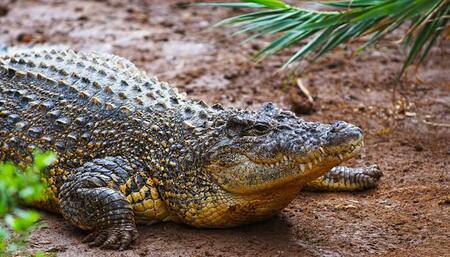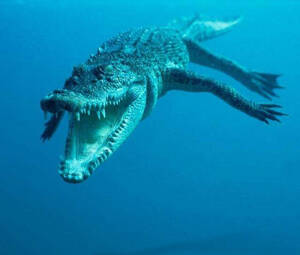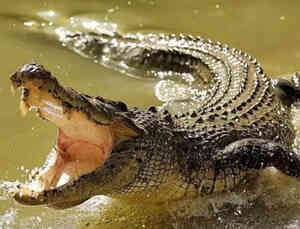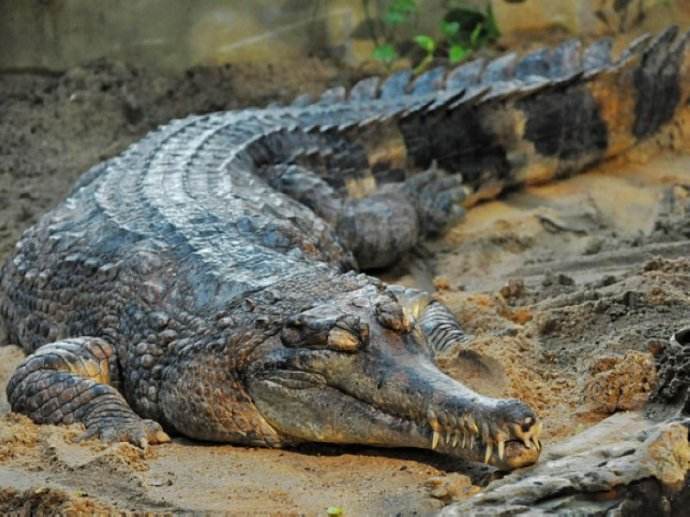Tomistoma schlegelii
IUCN
LCBasic Information
Scientific classification
- name:Tomistoma schlegelii
- Scientific Name:Malayan alligator, Malayan crocodile
- Outline:Crocodilia
- Family:Crocodilia Gavialidae Tomistoma
Vital signs
- length:4-5m
- Weight:93-210 kg
- lifetime:60-80 year
Feature
It was once believed that there were Malayan crocodiles in the Lingnan area of mainland China in ancient times, mainly distributed in inland rivers, but they no longer exist today.
Distribution and Habitat
Present: Brunei, Indonesia (Kalimantan, Sumatra, Java), Malaysia (Sarawak).
Possibly extinct: Malaysia (Sabah).
Extinct: Thailand.
Uncertain presence: Vietnam.
The Malayan crocodile is found in a variety of habitats throughout its range, including lowland freshwater swamp forests, flooded forests, peat swamps, lakes, blackwater streams, and rivers. It can also be found at rainforest edges near slow-moving rivers. Its preferred habitat is low-elevation peat swamp areas and acidic, slow-moving muddy water; it is also found in secondary forest habitats characterized by more defined channels and banks, higher pH and elevation, and a lack of peat mounds. The species requires land for basking and nesting.
Appearance
The Malayan crocodile is a large crocodile with an elongated snout and 76-84 sharp teeth of uniform size. It has a streamlined body and a muscular tail, with eyes and nostrils on top of the head, and a palate flap to prevent water from entering the throat underwater. It grows to 4-5 meters in length, but can grow even larger. Captive crocodiles have been recorded weighing between 93-201 kg. Both adults and juveniles are black, sometimes chocolate brown, with black stripes on the tail and body, and black spots on the chin. The abdomen is beige or white. Males are longer and heavier than females. The tail is strong and powerful, which helps with swimming, and the eyes have yellow to brown irises, which is quite rare among crocodiles.
The Malay crocodile is not a crocodile that only eats fish. It has a wide range of diets. Researchers have found crab-eating monkeys, mouse deer, wild boars, dogs, birds, monitor lizards, snakes, shrimps, etc. in the stomach of the Malay crocodile. In add
Details
The Malayan crocodile looks very similar to the Ganges crocodile (Gavialis gangeticus), but its head gradually narrows towards the snout, and it does not have the bulbous protrusion on the snout of the male Ganges crocodile.
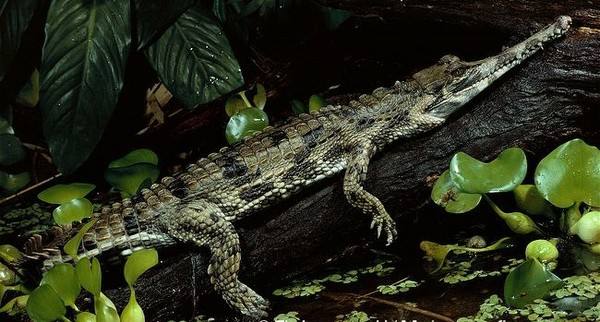
Historically, the Malayan crocodile has a wide distribution range and appeared in southern China hundreds of years ago. In the past, most experts believed that it belonged to the subfamily Crocodile, and was distantly related to the real Ganges crocodile. However, some scholars later believed that the Malayan crocodile may indeed have a certain relationship with the Ganges crocodile and should belong to the subfamily Crocodile.
This is a crocodile as rare as the giant panda. It was once distributed in large numbers in southern my country like the Yangtze alligator. However, due to the influence of the "Little Ice Age" in the Ming and Qing Dynasties, the temperature in East Asia dropped sharply. The Malayan crocodile could not adapt to the cold winter in China and became extinct in China. The Yangtze alligator survived with its strong cold resistance.
Because the living environment of the Malayan crocodile requires specific floating plants and shady waterside habitats, continuous deforestation, dam construction, opening of new waterways, and illegal hunting over a period of time have caused a large loss of its habitat. Due to the uncertainty of the number of Malayan crocodiles, it is temporarily classified as a critically endangered or endangered species.
Listed in the IUCN Red List of Threatened Species (IUCN 2011 ver 3.1) - Vulnerable (VU).
Listed in the Convention on International Trade in Endangered Species of Wild Fauna and Flora (CITES) - Appendix I.
Can be successfully bred in farms in Thailand and the Bronx Zoo and Miami Zoo in the United States.
Protect wild animals and eliminate game.
Maintaining ecological balance is everyone's responsibility!

